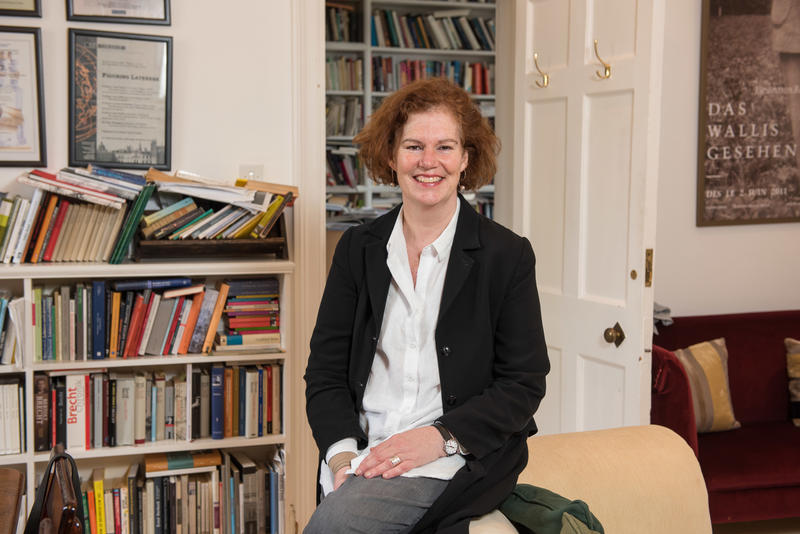New course launched for the next generation of creative translators

At a time when translators are facing unprecedented challenges in the face of artificial intelligence, a new graduate course will explore and celebrate translation as a creative endeavour in which the role of the human will always remain essential.
From ancient texts and contemporary novels to performance theatre, film and television, translation shapes the way we experience stories from past and present and from around the world.
Oxford’s undergraduates have long studied academic translation within Modern Language degrees, but to-date there has been no provision for graduate students. A new Masters in Creative Translation has been launched to fill this gap, coinciding with an important moment when the translation landscape is shifting and adapting to technological change.
Led by Professor Karen Leeder in the Faculty of Medieval and Modern Languages, the course also reflects a growing appreciation for translation as both a field of research and a creative discipline that requires not only linguistic skill, but also imagination, interpretation, and cultural sensitivity. 'It’s increasingly recognised as a literary art form,’ says Professor Leeder, herself a prize-winning translator. ‘We’re seeing a real coming of age for the field.’
The course will be based in the University’s new Schwarzman Centre for the Humanities, which brings many of Oxford’s internationally recognised Humanities faculties together under one roof, with new spaces for teaching, performance, and film. ‘There is a considerable creative reservoir and appetite for this course at Oxford. This is an exciting opportunity for students who will be joining a hub of creative activity,’ says Professor Leeder.
Distinct from academic translation, creative translation explores the history, theory and methodologies of translation and interprets not just meaning but voice, considering tone, rhythm, and emotion. In recent years, campaigns such as #NameTheTranslator have sought to credit translators alongside authors on book covers and prize lists, helping to foreground their role as artists and creative interpreters.
As well as developing their own practice as a translator, students on the Creative Translation course will be introduced to a range of materials, from the earliest translations of ancient texts to the dilemmas of AI, examine how translations differ, and explore areas such as translation for performance, adaptation, early modern translation, translating the untranslatable, multilingualism, as well as focussing on specific languages, genres, and periods. The course will include a programme of regular industry sessions with visiting creatives and experts.
The timing of the course is not coincidental. In the UK there is a growing demand for skilled translators to support thriving creative industries. It also comes at a time when the human role in translation is more important than ever, says Professor Leeder.
Artificial intelligence now plays a major role in translation – from machine-assisted software to Large Language Models. This technology processes and translates language in almost a blink of an eye enabling us all to ostensibly assume the role of translator. While these tools are powerful, they also raise questions about authorship, meaning, and creativity.
Professor Leeder is pragmatic. ‘All art forms are under threat from AI,’ she says, ‘but AI is used in translation, and we must find ways to work productively with it.’ The course will encourage students to critically engage with these technologies while also recognising their limits and learning to identify what makes for ‘good’ translation.
She points to some foreign language television series which have gained global followings in recent years, but in which mistranslating (or machine translating) in subtitling is a common issue. This has led to ‘lost in translation’ moments caused by words being incorrectly translated, paraphrasing, a lack of understanding of cultural context, nuance around characters being lost, and a failure to successfully deal with humour.
Human translators, Professor Leeder explains, will always bring something that machines cannot replicate. ‘AI can’t deal with metaphor, idiom, or the stresses of word order and how this can change meaning. This is where the value of human translation lies.’
‘There needs to be a re-evaluation of the role of the human translator,’ she goes on. ‘It’s so important to champion their role in the future of publishing when authorship itself is under threat.
‘We hope this course will not only prepare graduates to make a real impact in our creative industries, supporting a new generation of translators as creative thinkers, collaborators, and innovators, but will serve as a reminder that the ability to imagine, interpret, and connect across languages and cultures remains a distinctly human endeavour.’
Photograph of Professor Karen Leader, by John Cairns


